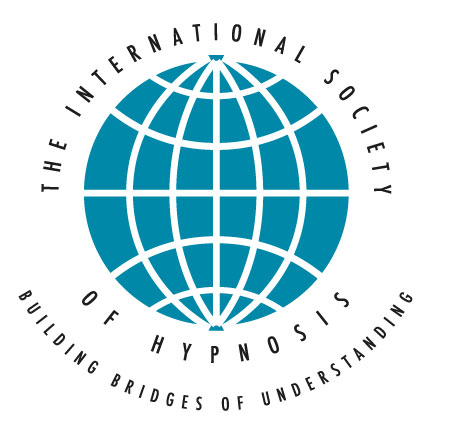American Journal of Clinical Hypnosis, 63(4), 355-371. PMID: 33999774 DOI: 10.1080/00029157.2020.1865869
What are the main biochemical elements of the hypnotic suggestion process in the brain? How can we detect them? This article revealed these factors.
The motivational bases of this paper was the urgent scientific need for an integrative approach to the main neurochemical background of suggestion mechanisms. The article has written about the five main chemicals which are hypothesized to be in relation to the hypnotic process: dopamine, glutamate, GABA, oxytocin, serotonin.
Let me provide a summary of the most interesting results of this article in relation to suggestions and hypnosis without any need for completeness.
In the human body dopamine plays a main role between the neurotransmitters, and is also the most researched chemical with regard to hypnosis. As Acunzo and colleagues (2021) summarized, dopamine and suggestion have a close relationship. Landry’s neuroimaging research emphasized (Landry et al., 2017) the main role of dopamine in the ACC (Anterior Cingular Cortex in the mesocortical dopamine system) activation during hypnosis.
Santarcangelo & Scattina (2019) underlined the role in suggestibility of nitric oxide in increasing dopamine release. Spiegel & King (1992) unfolded the positive correlation between the level of the dopamine’s metabolite (homovanillic acid) and suggestibility. This effect needs more exploration and replication in the future to deepen understanding of this process. The interesting result underlined the possibility to change low hypnotizability. Lotan et al. (2015) reported that methylphenidate increased low suggestibility in ADHD patient. Future research on the basis of Lotan’s results should focus on the modification of low hypnotizability in neurotypical adults too.
The article gave prominence to the effect of Val158Met (rs4680) gene to coding for Catechol-O-methyl transferase (COMT) enzyme. COMT breaks down dopamine into its main parts.
Raz, Fossella, McGuiness, Zephrani, and Posner (2004), Székely et al. (2010), and Katonai et al. (2017) reported that the subjects who carry val/met variation are the most highly suggestible people in the sample.
Glutamate role is important especially in the relationship of NMDA (N-methyl-D-aspartate) receptors. These receptors take part in the perception aspect of hypnosis. Most of the study’s results are from glutamate antagonists (N2O; ketamine) and MR (magnetic resonance) trials about dissociation state and suggestibility in ACC glutamate relationships. In summary the lower the glutamate level, the more likely participants are to respond to hypnotic suggestions. In contrast according to MR results (DeSouza et al., 2020) the higher glutamate adsorption yields higher suggestibility.
There are a lot of studies about GABA, Gamma-aminobutyric, acid’s role in suggestibility. These results (Eysenck & Rees, 1945 and e.g., Rosebush & Mazurek, 2011) indicated that higher GABA level means higher suggestibility. The fMRI scanning of ACC (DeSouza et al., 2020) also confirmed a moderate positive correlation between GABA level and suggestibility. The GABA agonist research also confirmed this. The anatomic background of these complex mechanisms is not yet clear.
Oxytocin is the main chemical in the primary bond between the participants and the hypnotist, the chemical basis of the rapport and general bonding process. There are different, conflicting, and mixed results about oxytocin and different methods of measurement of the effect (e.g. nasal dosage, saliva sample).
Bryant, Hung, Guastella, and Mitchell (2012) revealed that in cognitive suggestions the oxytocin’s effect appeared in the low suggestible male sample and increased the suggestibility. Bryant & Hung, (2013) found higher hypnotic response in high suggestible male participants. Parris, Dienes, Bate, and Gothard (2014) came to a different conclusion. They found decreasing suggestibility.
Liu, Huang, Chen, and Yu (2020) made an experiment with 146 participants about perceptional nocebo effect. There was no significant difference in the suggestion plus oxytocin and the suggestion without oxytocin group.
In the Varga and Kekecs (2014) study, before hypnotizability measurement, they took a sample of oxytocin and again, after the session, from both the hypnotist and the subject. This team found no significant correlation with hypnotizability.
Kasos et al. (2018) examined low and high suggestible participants and they detected different results. Low hypnotizability went together with high oxytocin increase (before hypnosis baseline and after hypnosis) and vice versa. In general, there’s a caution to take into consideration the sampling method. Saliva sampling has some limitations but is both easy to apply and also more widely accessible. As Horvat-Gordon, Granger, Schwartz, Nelson, & Kivlighan (2005), Javor et al. (2014), and McCullough, Churchland, & Mendez (2013) mentioned there could be a better way for measuring oxytocin level than immune assay method. This article didn’t mention the other options, but possibly anticipated the venal blood sampling which is harder to employ because of the need for laboratory infrastructure and staff, and the higher costs.
Bryant et al. (2013) examined the rs53576 and rs2254298 polymorphism of the so-called “oxytocin receptor gene”(Bryant et al., 2013, p. 361). The first one correlates with a higher suggestibility and the second one had significant effect on the engagement of the hypnotic situation, induction, and suggestions.
Serotonin-related receptor 5-HT2A has a main role in the hypnotic suggestion process through creating subjective reality, the harmony of inner and external words. According to Naughton et al. (2000) it mediates the inhibitory function of serotonin on the dopamine system. The article summarized the results in psychedelics – the serotonin antagonists – dosage. In general, these materials increase hypnotic suggestibility. For the future research Acunzo et al. (2023) emphasized that it would be fruitful to examine the variety of serotonin transporter polymorphisms.
